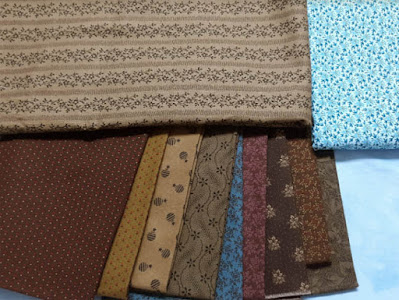Cassandra's Circle #12: Alabama Rose for Virginia Tunstall Clay Clopton
By Becky Brown
"A Belle of the Fifties"
Virginia Tunstall Clay (1825-1915)
Brown's on Pennsylvania Avenue was little changed by the time of
this early 20th-century photo.
Brown's Marble Hotel where Southern politicians boarded in Washington City was a lively place in the late 1850s. At a time when Senators were appointed rather than popularly elected most of the Southerners were from moneyed political families, committed to advancing the agenda of the planter aristocracy.
Clement Clay (1816 - 1882)
Virginia Clay's husband, son of a former Alabama senator, was elected in 1853. She came to Washington in her late twenties, ten years after their marriage. Other young families that "messed" at Brown's included South Carolina's James and Mary Chesnut, Texas's Charlotte and Louis Wigfall, and Mississippi's Jefferson and Varina Davis. The Clays became friends with all but particularly close to the Davises with Virginia Clay and Jefferson Davis becoming lifelong friends (and possibly lovers.) "Scarcely a woman in the circle ...was not acknowledged to be a wit or beauty."
Virginia's manuscript diary is in the Clay papers at Duke University
One sad note was the loss of Virginia Clay's only child who died as an infant in Washington
It's too bad Mary Chesnut did not begin keeping a diary until after these Senators joined the Confederacy. Her accounts of the fun and politics at Brown's would have been fascinating. Virginia Clay did keep a diary that she reworked as a memoir in the early-20th-century with the help of New York editor Ada Sterling and others.Virginia, however, had little of Mary Chesnut or Varina Davis's wit or gift of analysis (perhaps a good reason Varina's husband was so fond of "Ginnie" Clay.)
#12: Alabama Rose by Denniele Bohannon
"Our 'mess' at Brown's Hotel (rendezvous of Southern Congressmen) shortly became so well known, because of the interest attaching to so many of its members," recalled Virginia. She wrote her father-in-law in 1857.
"We keep Free-soilers, Black Republicans and Bloomers on the other side of the street. They are afraid even to inquire for board at this house."
Black Republicans were any Republicans (black for their hearts or their abolitionist sentiments, I have never figured out.) Bloomers were women's rights advocates and Free-soilers were those opposed to the expansion of slavery into the west.
It was all quite exciting but, as Virginia later wrote: "We feel a little as...if we are dancing over a powder magazine."
Illustration of Virginia in the early 1860s;
she was in her late 30s during the Civil War.
The men of the Brown Hotel mess resigned or were expelled from Congress after Lincoln was elected and the group gravitated to Richmond, Virginia.
Virginia's capitol building became the capitol of the Confederacy.
Carte-de-visite related to the painting above.
The familiar column indicates it was taken at Quinby & Company
in Charleston although other photographers
distributed it. Pretty women were collectible CDVs.
Alabama Rose by Pat Styring
Less background, more applique & some embroidery.
Virginia's husband was pictured on Confederate money.
After Appomattox the Clays joined the Davises in their flight south.
Clay was accused of planning Lincoln's assassination and spent a year in prison without trial.
Clement Clay retired to an Alabama cottage called Wildwood.
Virginia lived elsewhere most of the time. He died in 1882.
She remarried Alabama Senator David Clopton (to
Jeff Davis's disappointment) and when widowed again lived here at the end of her life.
#12: Alabama Rose by Susannah Pangelinan
with a few additions.
Virginia about the time her book was published in 1905
Read A Belle of the Fifties at this link:
Typescipt verified, initialed by Virginia Clay Clopton and Ada Sterling
The Block
Alabama Rose
Virginia must have been named for her father's home state.
Marie Webster showed a Virginia Rose in her 1915 book. The asymmetrical block features a classic stylized rose in the center with rotating buds---perhaps they should be love apples to remind us of Virginia Clay's charms. That Belle of the Fifties remained a Belle well into middle age.
We're making it an Alabama Rose. Applique to an 18-1/2" square or cut it larger and trim later.
The Pattern
One way to print these JPGS.
- Create a new empty JPG file that is 8-1/2" x
11" or a word file.
- Click on the image above.
- Right click on it and save it to your file.
- Print that file out 8-1/2" x 11". Note the inch
square block for reference.
- Adjust the printed page size if necessary. Do not use
tools like "Fit to page."
- Make templates.
- Add seams when cutting fabric.
Becky Brown's set
One more to go
A 1930s variation of the Virginia Rose.
Our medallion set requires 13 blocks so the last block will be posted on the last Wednesday of January, 2021.
A Postscript: "The Jeff Davis Scandal"
The "Jeff Davis Scandal" was all over the
newspapers in July and August, 1871
"On Tuesday evening Jeff. Davis left the Peabody Hotel, Memphis, Tenn, in company with the wife of another man..... On the train from Memphis to Huntsville, Alabama:
The porters "came upon Davis and the woman in the same berth and told them that such conduct was not allowed on that road. Mr. Davis, with all the dignity of an ex-President....said he had paid for the berth and would do as he pleased. The lady turned her back....Conductor Miller was determined, and...succeeded in persuading the venerable martyr of the lost cause to get out of the lady's berth....in his shirt and drawers in presence of a number of disgusted witnesses."
The assumption, of course, is the woman was the lady from Huntsville, Virginia Clay, Rumors also named a Memphis actress named Mrs. Bowers. Everyone except the porter denied the whole story and that was the end of that.





















































